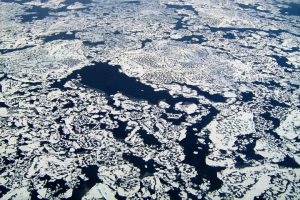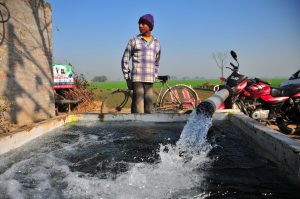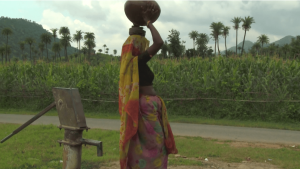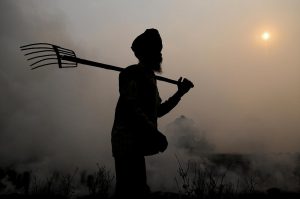Pakistan’s one-page INDCs (Intended Nationally Determined Contributions) may have shocked many of us, but all is not lost. Pakistan can still take a clear and strong position on some core issues. More importantly, it should not ask for more international support and assistance because we are victims and poor, but because we are investing our resources on some very globally important and innovative schemes. Thus the international partnership and support will not only be helpful but also help us in creating models for others to follow in the region and beyond.
- Legally binding agreement
Pakistan can still push for a legally binding agreement because its absence will have a more damaging impact on countries, including Pakistan, vulnerable to climate change. This is not just a high-level or rhetorical position. The stakes are high for Pakistan. Our reason to push for a strong agreement should not be simply to put pressure on the West for their high historical emissions. That will be shallow and self-defeating. We should seek a treaty to protect the long-term interests of the poor and marginalised. With heads of states and governments from all over the world expected to inaugurate the Paris summit of the United Nations Framework Convention on Climate Change (UNFCCC), this should be foremost on the minds of leaders from developing states.
- Push for global temperature stabilisation at 1.5 degree centigrade
Some sceptics say it’s too late but the world has the technology and financial resources to decarbonise pretty quickly — in fact it can be done in a matter of decades. Pakistan’s economy and infrastructure does not have the adequate resilience levels to tackle changes in weather patterns.
On the one hand, we are faced with the conundrum of heavy monsoon rains that cause floods, and on the other, receding glaciers are leading us towards being declared water stressed (we get over 65% of our water for agriculture from glaciers — much more than India does). It is in our interest to see that the global temperature is stabilised as quickly as possible and as close to 1.5 degrees centigrade as possible.
- Loss and damage
We must push to include loss and damage clause in the final agreement. It probably will not happen, but it will be a politically correct step to take by the developed nations. Going beyond posturing, we need better clarity and deeper conviction on this than demonstrated do far. It will be demanded by least developed countries — LDCs — (and the most vulnerable country’s group, known as Climate Vulnerable Forum, or CVF for short) and we need to align more closely with them. We should ask to hold a meeting with the LDC group chair (as well as with the present CVF chair, which is the Philippines). India and China have both mentioned loss and damage in their Intended Nationally Determined Commitments (INDCs), as have several other countries. We can aspire to align our position with them (within G77+China), and seek a high-level meeting with both, for obvious reasons. It can be a talking point in almost all bilateral meetings. We can avoid the “C” word in this context (compensation), but we can use the “A” word liberally and almost at will (attribution).
- Consider formally joining Climate Vulnerable Forum
And why not since we are counted among those by most climate indices? We should seriously consider working closely with the island countries’ negotiating group. As a middle income developing country, the international assistance is more promising for CVF (distinct form LDCs). Pakistan, based on recent past experience, can push for and become an active member, if not a leader, of this forum. This is a better proposition for us than the post-World War category — developing/Third World/middle income country in the climate context.
- Stop playing the victim card!
We should stop beating our chest for being victims of climate injustice or its consequences (2010 super floods). That’s history, and that’s what we always do — and so do many other countries. We should project ourselves, instead, as heroes and survivors of such challenges. The world is waiting to hear from the doers. I think we are in a position to showcase our work, investments, accomplishments, and our progress — despite our meagre resources and other challenges, such as the following:
Pakistan has invested in the technology to develop the world’s largest biometric database, managed by National Database & Registration Authority. With a little more effort the National Disaster Management Authority can use the computerised national identity card system to initiate a trigger-based risk transfer and insurance system to cover the most vulnerable segment of our society. And to insure against climate-induced disasters, we need to come up with creative ways to generate resources to set up this insurance fund. Public-private partnership can be one way to provide insurance coverage against flash floods, urban floods, sea water intrusion, Tsunamis and cyclones. In addition, the national insurance programme can cover not just the lives of people but their homes, standing crops, livestock and their small businesses in rural and fast growing urban settlements.
Likewise, with the poverty surveys and the world’s largest income support programme (BISP) under our belt, we can perhaps undertake climate vulnerability assessments and surveys to integrate the national income support programme into a climate adaptation plan so that our communities are more resilient to cope with and tackle the climate challenges.
Pakistan has invested huge resources in one of the world’s largest solar parks in Cholistan, Punjab province. We have the institutional capacity to build similar solar parks of comparable size in various provinces as well as offshore wind to generate renewable energy and reduce our reliance on fossil fuels. We have a track record of generating hydropower energy from the Mangla and Tarbela dams. With some international support we may build our institutional competence to generate additional hydropower and contribute towards lower global emissions. For us water management through water reservoirs should not just mean adaptation for agriculture and food security but also to expand livelihood options for our farmers. We are aspiring to build water reservoirs as a mitigation measure in order to generate energy for our growing population and growing economic needs.
This article was first published in Dawn.







